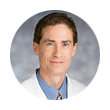With doctors already in demand, fewer are joining the ranks
Now taking applications. Job requires minimum of 11 years of intensive, life-consuming training after high school. Applicants must anticipate coming out of training with at least $140,000 of debt. Salary less than you’d think and likely to decrease in the near future. Anticipate 60 to 80 hour work weeks with piles of paperwork and the expectation of being available around the clock. This career still engenders respect in the community and generally offers a great deal of personal satisfaction, but the ever-increasing pace of client interactions is bound to be frustrating. Don’t wait—urgent shortage of manpower is expected!
The Obama administration has signaled concern about a shortage of physicians—especially primary care doctors—in the coming years, as reported in an article in the New York Times. They offer several possible therapies to this growing problem:
“To cope with the growing shortage, federal officials are considering several proposals. One would increase enrollment in medical schools and residency training programs. Another would encourage greater use of nurse practitioners and physician assistants. A third would expand the National Health Service Corps, which deploys doctors and nurses in rural areas and poor neighborhoods.”
Despite the fact that more doctors are needed it appears that the trend has actually been heading in the opposite direction. The heyday of medical school applications was during the first few years after the television show ER came on the air, and the number of qualified individuals applying for medical school spots has dropped ever since then. Just this last year my own alma mater, the University of Utah School of Medicine, announced that they will be cutting back on the number of students in each class (from 102 to 80) for the first time in decades. They say it’s a lack of adequate state funding.
The Obama administration recognizes the need for more money and maintains that an infusion into the system now will paradoxically decrease costs in the future. If we have more primary care physicians providing ready access to preventive medicine—so the thinking goes—fewer people will end up visiting the already overburdened emergency departments for their routine care.
I’m a little skeptical. It won’t be higher salaries that entice young minds to commit to the long hours and years of medical training. It’ll be a better healthcare environment that solves the problem—more emphasis on primary care, patients taking more ownership in their own health, and less insurance bureaucracy and onerous paperwork. Solve these problems and we’ll start getting more medical school applications. Or maybe we just need to wait for another show like ER to come on prime-time television.





